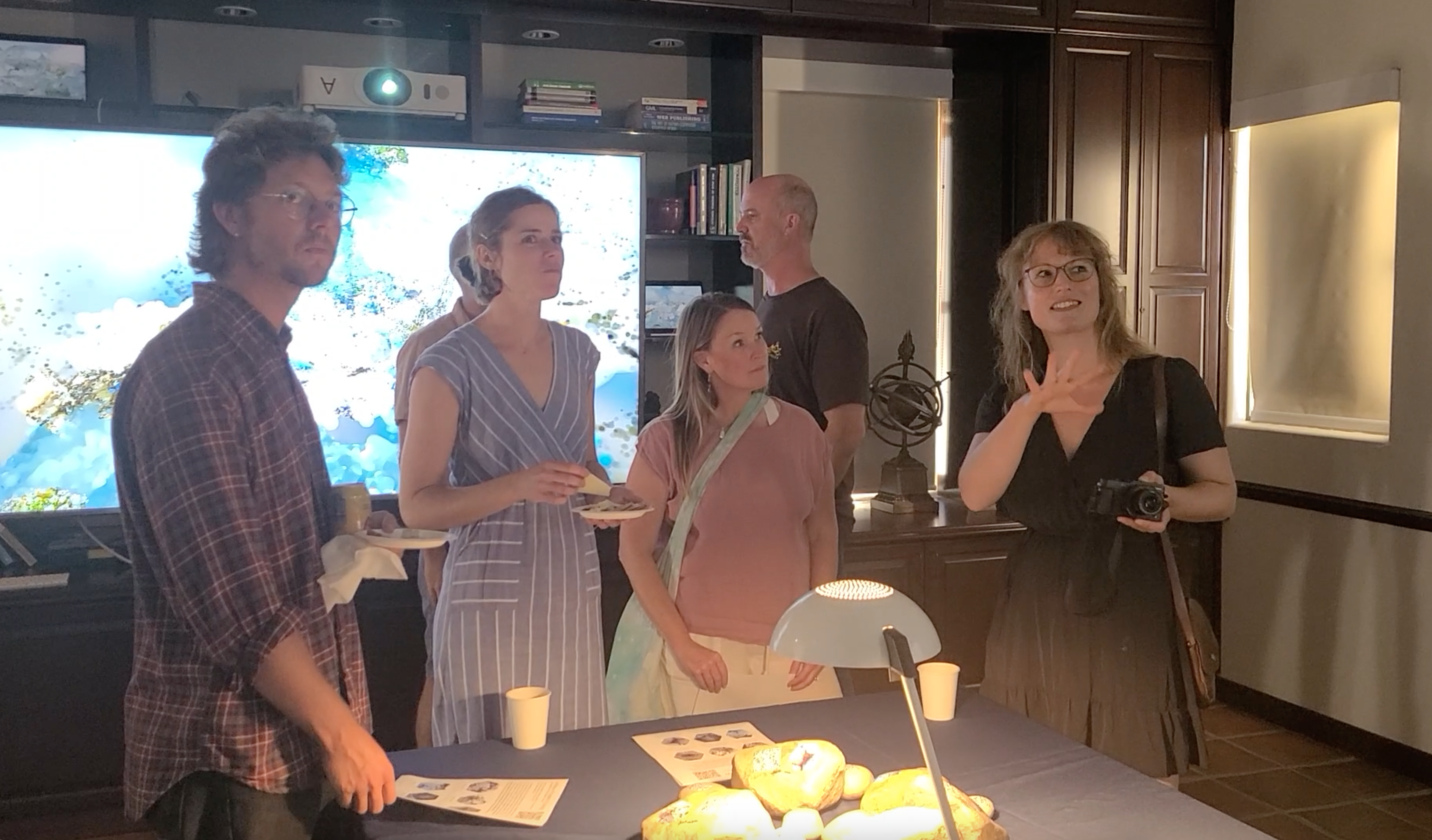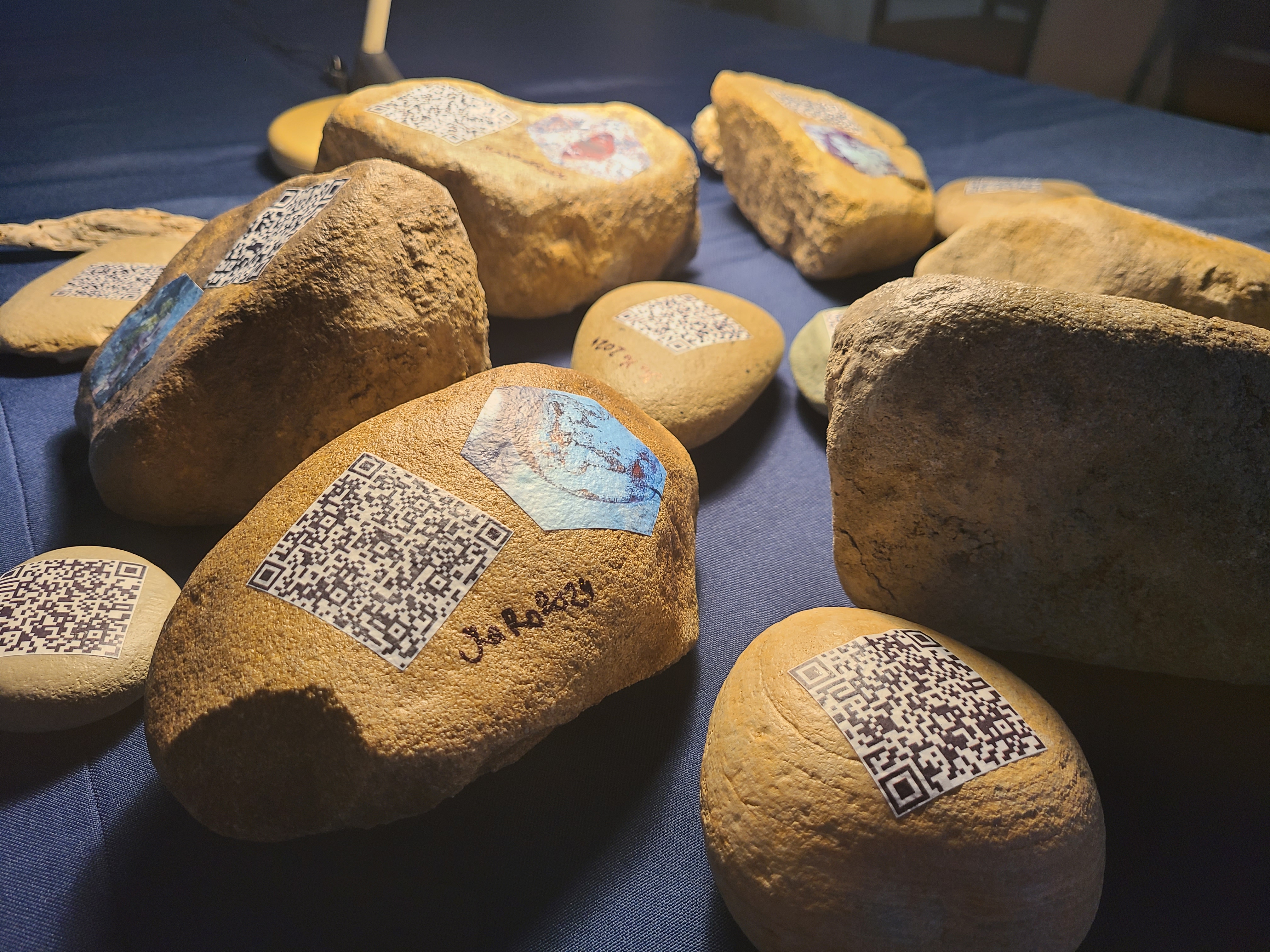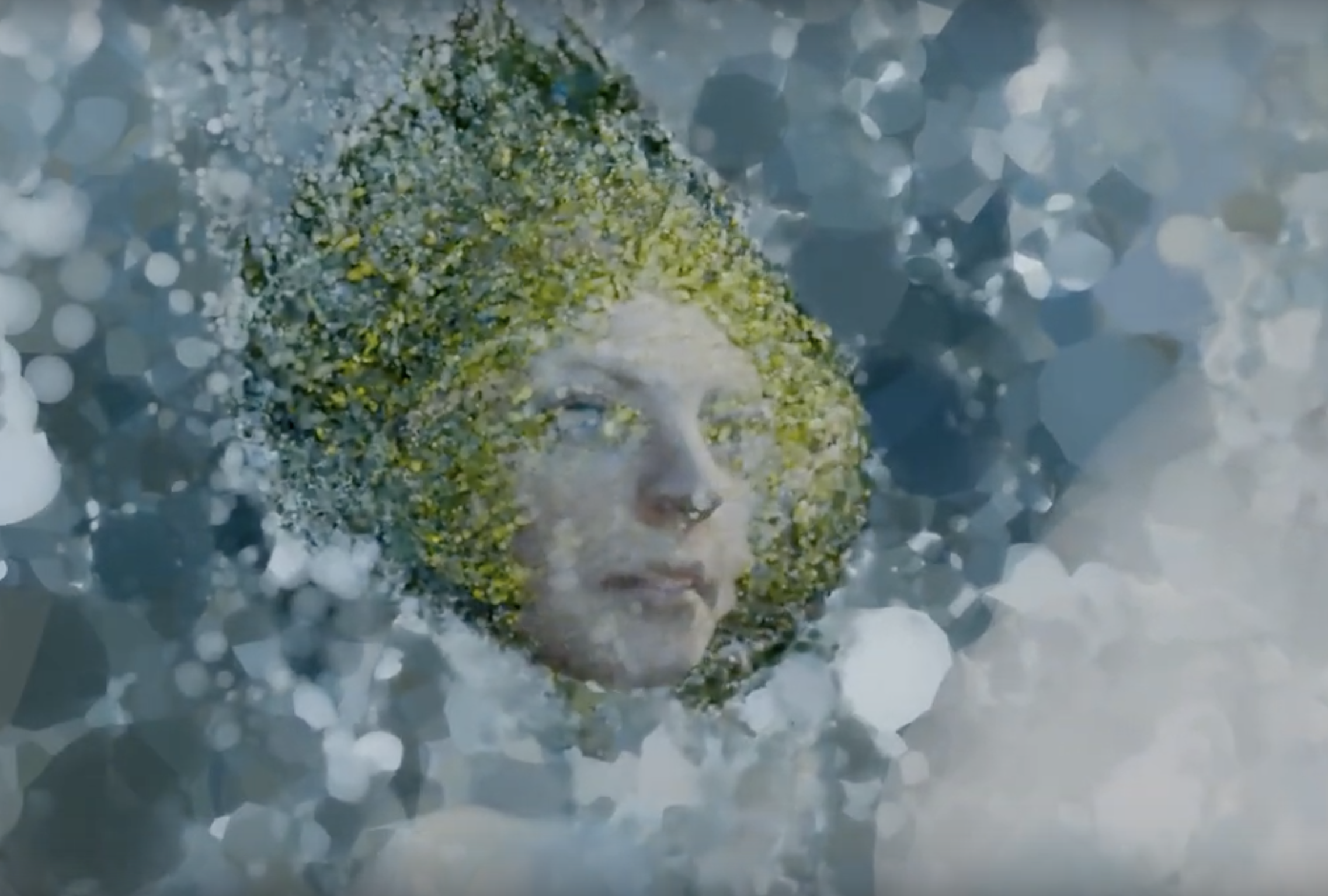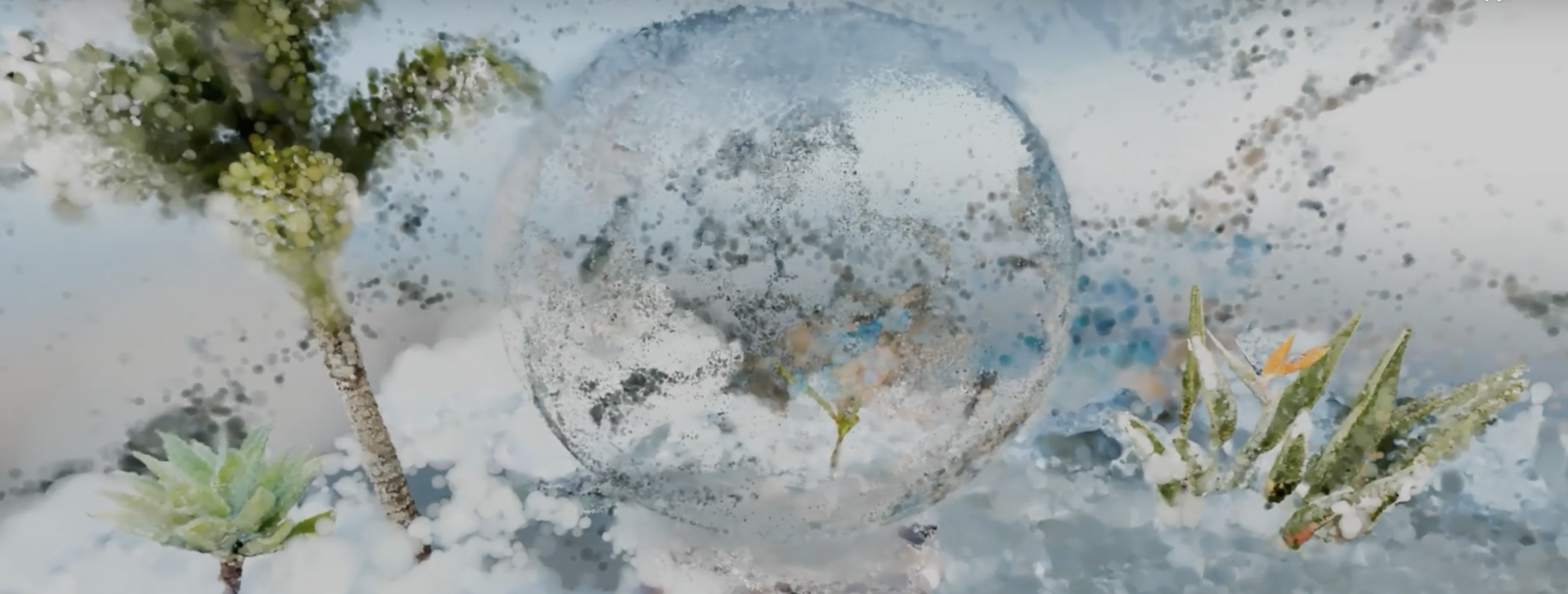Impressions

Carson Brown stepped into a dimly lit conference room and entered the digital world of Martina Fröschl, NCEAS’ 2024 Artist in Residence. Brown was surrounded by 3D digital captures of the Santa Barbara landscape - a palm tree, blooming Bird of Paradise, and a spiky agave plant among them. The models, cast onto one large projector and three TV screens around the room, swirled together and apart as the animations rotated.
Brown approached a wooden table in the center of the room. A cluster of stones rested there in the spotlight of a desk lamp; a centerpiece designed by ancient geologic events and weathering. Each stone also had the mark of a more modern influence: QR codes prompted Brown to take out his phone and explore the exhibit on his own.

As he scanned the codes, Brown noticed that the rocks bore stories, each with scenes and characters portraying scientific information. His favorite story was about agave, a dry-climate plant that commonly grows in Santa Barbara. Brown learned from the story that agave can play an important role in maintaining flora and mitigating climate change as Santa Barbara will continue to dry out through climate change. In his own work, Brown is already exploring agave’s strengths as a sustainable and locally-sourced building material. He describes the agave stalk as a combination of bamboo-like wood and a dry foam, ideal for his current project: a wooden surfboard.
“I think art is a really awesome way of communicating science,” said Brown after exiting the exhibit. “It’s something that I've tried to transition to in my own life.” After studying and working in environmental science, Brown is now the wood shop technician at UCSB’s Department of Art, sharing his love of the environment and natural building materials with students.

“Science would tell you that that's a rock and there's some algae on it,” reflected Rachel King, a postdoctoral scholar at NCEAS. “But then art asks, what else could be there? How could we interpret this in different ways?” King spearheads NCEAS’ Digital Assets for Nature project, seeking to catalog all digital methods of tracking life on Earth, from satellites to sound receivers under the sea. In her free time, King likes to experience the local area herself by surfing, hiking, and spending time at the Santa Barbara Botanic Garden. After viewing Fröschl’s exhibit, King reflected that while science can help us identify the world we see, art can help us identify our connections with the world.
Peter Menzies, a spatial analyst and developer at NCEAS, also noted the importance of building emotional connections to scientific concepts. “Science informs us about things that apply to everyone, and yet, even if it is conveyed in simple terms, it doesn’t provide an emotional tie. And art, of course, is amazing at connecting people emotionally to something that might otherwise seem esoteric.”
Menzies appreciates 3D art. He said of the main projection: “Even just looking at it on a TV screen, it felt like you were in it. It was very immersive. It made me want to be in the center of the swirling Earth.”
Bird of Paradise, an orange flower uniquely shaped like the head of a bird, stood out to Menzies among the other 3D models. He was unfamiliar with the plant when he moved from North Carolina to Santa Barbara in 2022. Now it is a symbol to him of the sunny coastal climate.

These elements are, of course, also symbols of Martina Fröschl’s one-month residence experience. “All these elements are somehow connected to my interviews and my personal impressions of Santa Barbara and NCEAS,” she said.
“I decided I wanted to make it approachable for a lot of people. That’s why I decided to do augmented reality, the simplest form. There are different forms of image trackers and so on, where you can put 3D models in the room, but this needs processing power on the side of the phone.”
She also shared with NCEAS her mindset and methods for the project: “I just want to be present here and collect impressions and maybe also give back different thoughts. Just for a moment make people think in a different way. The interviews were a very important part of the process.”
Fröschl interviewed NCEAS residents to help inform her creative work. She asked each resident to define systems ecology. “This was one of the most important questions, besides about their research. I got some pretty neat answers.” You can hear excerpts from these interviews in the main projection video.
A Piece of Systems Ecology enjoyed its one-night debut in Santa Barbara, but its lifespan may continue on other continents. “I think it’s sad to just do a piece for one place,” said Fröschl. “I might show it in Vienna, so the story of the ecology here also travels there. And as many [NCEAS residents] mentioned, everything is connected. If you look at the impressions that I gathered here in Santa Barbara, I think you can also think about the global aspects of our human influence on the planet.”
- - -
Interested in becoming our next Artist in Residence? Check the Artist in Residence webpage in the spring for 2025 applications. You can also get updates for this and other opportunities at NCEAS through our monthly newsletter.
